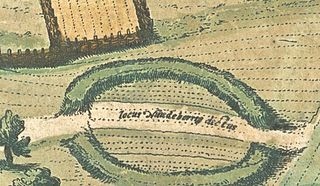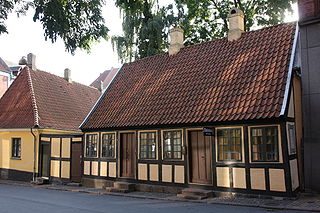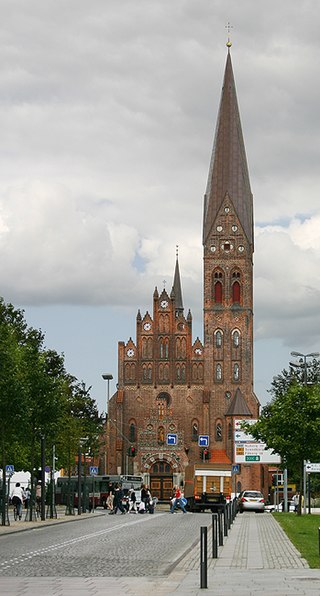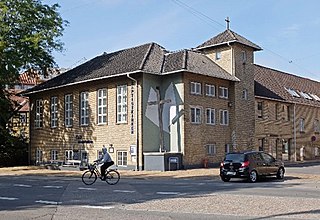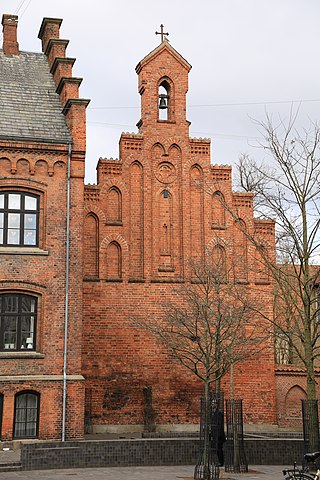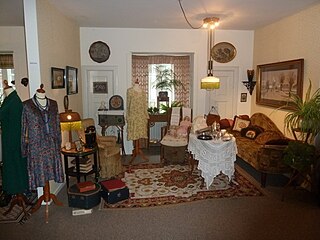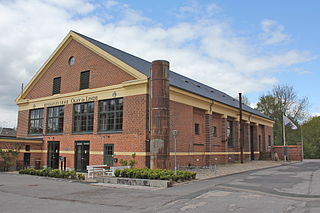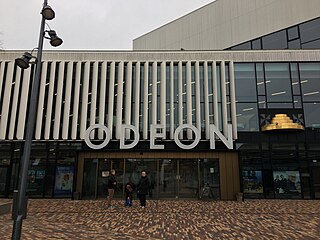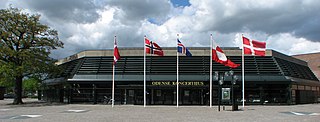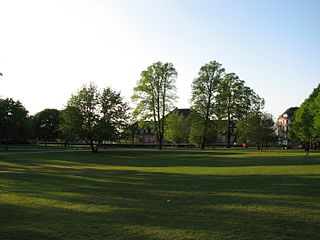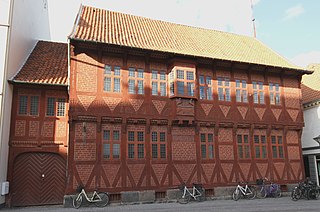15 Sights in Odense C, Denmark (with Map and Images)
Legend
Welcome to your journey through the most beautiful sights in Odense C, Denmark! Whether you want to discover the city's historical treasures or experience its modern highlights, you'll find everything your heart desires here. Be inspired by our selection and plan your unforgettable adventure in Odense C. Dive into the diversity of this fascinating city and discover everything it has to offer.
Sightseeing Tours in Odense C1. Saint Canute's Cathedral
St. Canute's Cathedral, also known as Odense Cathedral, is named after the Danish king Canute the Saint, otherwise Canute IV. It is a fine example of Brick Gothic architecture. The church's most visited section is the crypt where the remains of Canute and his brother Benedict are on display.
2. H. C. Andersens Hus

The Hans Christian Andersen Museum, or H.C. Andersens Odense, is a set of museums/buildings dedicated to the famous author Hans Christian Andersen in Odense, Denmark, some of which, at various times in history, have functioned as the main Odense-based museum on the author.
3. The Danish Railway Museum
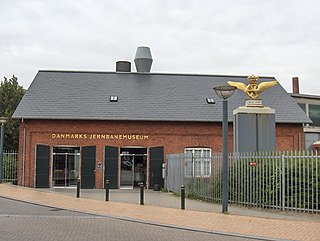
The Danish Railway Museum is the national railway museum of Denmark, located in the city of Odense. Established in 1975, it is situated in a former engine shed adjacent to the city's main railway station. It is the largest railway museum in Scandinavia.
4. Nonnebakken
Nonnebakken is a hill in Odense, Denmark. It is the site of one of Denmark's six former Viking ring castles, built during the reign of Sweyn Forkbeard, who had forced his father Harold Bluetooth to leave the country and seek refuge with the Jomsvikings on Wollin around 975. The fort enabled its occupier to control the Odense River passing next to the hill.
5. H. C. Andersens Barndomshjem
Hans Christian Andersen's Childhood Home is a small museum located in Munkemøllestræde 3-5, originally Klingenberg 646 in Odense, and comprises a total area of approx. 42 m², which the shoemaker family with the then two-year-old Hans Christian Andersen moved to in May 1807 and lived in until 1819. In Hans Christian Andersen's childhood, the house consisted of three apartments. In the first one, Hans Christian Andersen lived with his parents, and in the other two apartments, respectively, the glovemaker's apprentice Frantz Köcker and his family lived, and at the other end of the house, the hatter's apprentice Phillip Schenk and his wife. The Andersen and Köcker families had a common anteroom as an entrance to the two apartments.
6. St. Alban's Church
St. Alban's Church is the Roman Catholic parish church of Odense, Denmark. It should not be confused with the medieval church of St. Alban's Priory where King Canute IV was murdered in 1086, and which was later replaced with St. Canute's Cathedral. The medieval St. Alban's Priory was located at Albani Torv roughly halfway between St. Canute's Cathedral and St. Alban's Church. A modern stone plaque located at the site of the former church's altar is the only visible sign of this structure.
7. Baptistkirken i Odense
The Baptist Church in Odense, also called Christ Church, is a Baptist church in Odense with approx. 280 members, of which approx. 40% are New Danes. The church was consecrated in 1933, the extension in 1982, and the church hall was renovated in 2020.
8. Gråbrødre Klosterkirke
Graabrødre Abbey Church in Odense was part of Gråbrødre Monastery. The church was built at the end of the 1200s and came to house many distinguished funerals, the first of which were two of Erik Glipping's daughters. King Hans' queen, Christine, who lived in Odense around the year 1500, decorated the church with, among other things, Claus Berg's Altarpiece and had herself buried here with her husband. Later, her son, Christian II, was also buried in the church. After the Reformation, the church fell into disrepair and in the early 1800s it was demolished and the burial grounds moved to St. Canute's Church. At the end of the 1800s, a smaller chapel was built at Gråbrødre Hospital in a different place than the previous church.
9. Tidens Samling
The Tidens Samling in Odense is a cultural-historical hands-on museum of clothes, form and housing in the 20th century from the 1900s - 1990s. Here you are allowed to touch the exhibited objects, because you can sit in the furniture, open the drawers, look in the books and try on the clothes.
10. Fredens Kirke
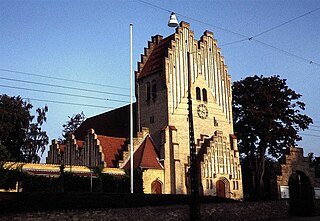
Fredens Kirke is a church located in central Odense. It was designed by the architect Peder Vilhelm Jensen-Klint and built in 1920 in the former Sct. Hans Landsogn. The name was chosen to mark the peace after World War I.
11. Thriges Kraftcentral
Thriges Kraftcentral is a well-preserved industrial building, which contains a rare intact interior from the early days of electrical engineering. The power plant is owned by the real estate company Olav de Linde, but since 2007 it has also served as a visitor place under Møntergården. Particularly interesting is the opportunity to see the original B&W diesel generator from 1923, which is started up every month. The generator is started on the first Sunday of each month by the Diesel Group, which consists of a number of volunteer engine experts, so that the public has the opportunity to see and hear the old machine in action.
12. Odeon
ODEON is a music, theatre and conference centre in Østerbro in Odense, with a central location in the major urban transformation project in the city centre, close to the old Hans Christian Andersen quarter and Odense Concert Hall 5 minutes from Odense Railway Station Center.
13. Odense Koncerthus
Odense Concert Hall, which was inaugurated in 1982, is a concert hall located at Claus Bergs Gade 9 in Odense, not far from H. C. Andersen's House. The house's concert hall is named after Carl Nielsen. The hall is a concert hall with excellent acoustics, with room for 1,212 people and equipped with a 46-voice organ built by one of the world's leading organ builders, Marcussen & Søn. The concert hall was designed by the architects Per Hougaard Nielsen, C.J. Nørgaard Pedersen, Lars Møller and Birthe Rørbæk.
14. Kongens Have
King's Garden is a large, formal palace park in central Odense, Denmark. Located directly across from the Odense station, it is bounded by Railroad Street to the west and Eastern Stationsvej to the north. It stands in front of Odense Palace.
15. Møntergården
Møntergården is a cultural history museum in Odense, located in the block between Sortebrødre Stræde, Hans Mules Gade, Claus Bergs Gade and Overgade in Østerbro. The museum's official address is in Møntestræde, which is a small alley that runs right through the area.
Share
How likely are you to recommend us?
Disclaimer Please be aware of your surroundings and do not enter private property. We are not liable for any damages that occur during the tours.

